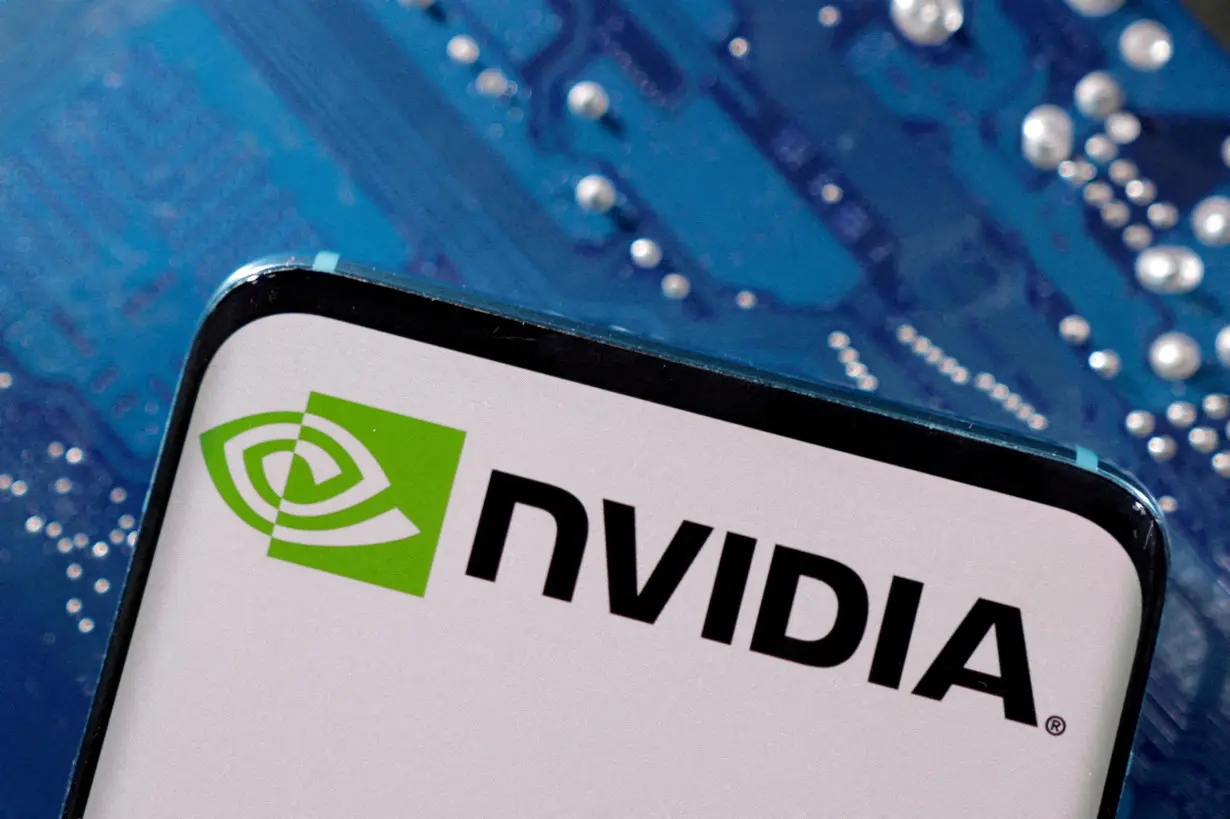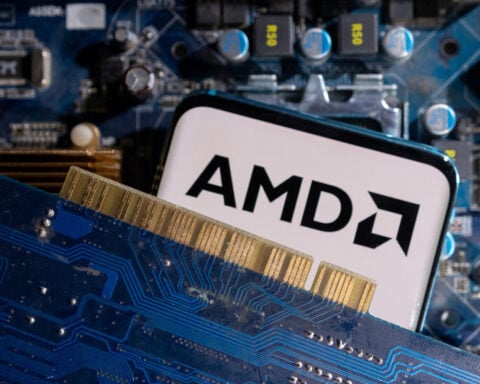By Bansari Mayur Kamdar
(Reuters) - An exchange traded fund (ETF) tied to high-flying shares of U.S. chipmaker Nvidia Corp is the top-performing ETF so far this year, as the frenzy around artificial intelligence attracts buyers.
The GraniteShares 1.5X Long NVDA Daily ETF, that tracks 1.5 times the daily percentage change of Nvidia, has gained 328.5% so far this year, while the stock has risen 190%.
This makes it the top performing ETF so far in 2023, according to VettaFi Research, followed by the GraniteShares 1.5x Long Meta Daily ETF, another leveraged ETF that has rallied 272% year-to-date.
Leveraged ETFs seek to amplify the returns of the underlying index or stock.
"The reason why NVDL is the best performing ETF in the US market is because of the astonishing performance of the underlying company," Will Rhind, CEO and founder of GraniteShares, said.
"Nvidia has become the number one stock to own in AI."
Net assets in the ETF have climbed to $205.6 million as of Wednesday, from nearly half a million dollars at its launch in December 2022, according to LSEG Lipper data.
Single-stock ETFs that allow for increased exposure to shares have garnered a lot of interest this year, particularly among investors interested in so-called "Magnificent 7" that includes companies like Nvidia and Meta Platforms.
Direxion rolled out two new ETFs tied to Nvidia in September, while REX Shares and Tuttle Capital Management launched the T REX Single-Stock ETF suite last month, which offers 200% and -200% exposure to Nvidia and Tesla.
"Leveraged ETFs come with the high volatility that draws gamblers like a moth to a flame," said Bryan Armour, director of passive strategies research for North America at Morningstar.
"Over the long run, they are a losing proposition. They reset their exposure daily, meaning they have to buy more when they go up and sell when they decline."
(Reporting by Bansari Mayur Kamdar in Bengaluru; Editing by Mrigank Dhaniwala)

 Trump has begun another trade war. Here's a timeline of how we got here
Trump has begun another trade war. Here's a timeline of how we got here
 Canada's leader laments lost friendship with US in town that sheltered stranded Americans after 9/11
Canada's leader laments lost friendship with US in town that sheltered stranded Americans after 9/11
 Chinese EV giant BYD's fourth-quarter profit leaps 73%
Chinese EV giant BYD's fourth-quarter profit leaps 73%
 You're an American in another land? Prepare to talk about the why and how of Trump 2.0
You're an American in another land? Prepare to talk about the why and how of Trump 2.0
 Chalk talk: Star power, top teams and No. 5 seeds headline the women's March Madness Sweet 16
Chalk talk: Star power, top teams and No. 5 seeds headline the women's March Madness Sweet 16
 Purdue returns to Sweet 16 with 76-62 win over McNeese in March Madness
Purdue returns to Sweet 16 with 76-62 win over McNeese in March Madness








